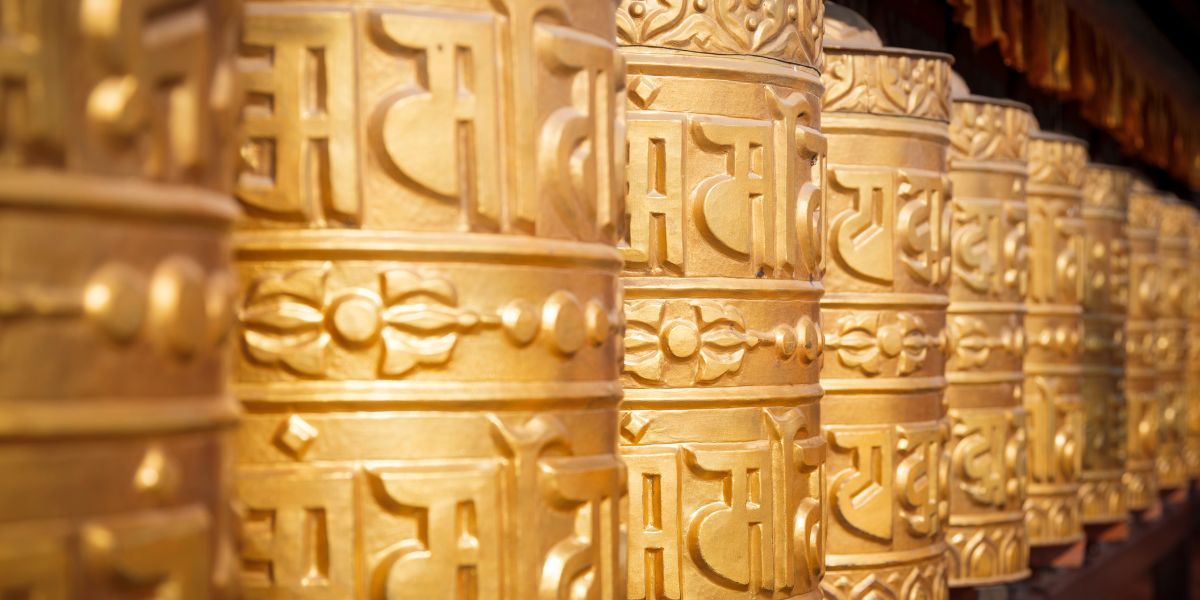As a pilgrim newly acquainted with the Tattvas, I’m using this page as an initial placeholder to store resources for further learning. I came across this term while doing expanded research related to the Principle of Vibration outlined in the Kybalion.
Table of Contents
ToggleA Basic Introduction to Tattva Study
The term “tattvas” is a Sankskrit word originating from various Indian philosophies and spiritual traditions, including Samkhya, one of the six orthodox schools of Hindu philosophy, as well as Tantra and certain forms of yoga.
ChatGPT returned this as an overall summary:
Tattvas are the basic principles, elements, or categories of reality, describing everything in the universe, including the physical, mental, and spiritual realms. Traditionally, there are 36 tattvas in Shaivism and 25 in Samkhya philosophy, ranging from the gross elements to the subtle principles that underpin consciousness itself.
I also read of 5 Principle Tattvas, and 2 hidden Tattvas in Samael Aun Weur’s Gnostic Glorian teachings.
Again, ChatGPT provided a useful resource in trying to figure out the relationship and connections of 5,7,25 and 36 Tattvas – providing the following detail:
The varying numbers of tattvas – 5, 7, 25, and 36 – reflect different philosophical and spiritual traditions within Indian thought, each with its own way of categorising the fundamental principles or elements of reality. Let’s break these down in a way that’s easy to understand:
5 Tattvas
- Origin: Found in various Indian spiritual traditions, including some schools of yoga and Ayurveda.
- Components: Earth (Prithvi), Water (Apas), Fire (Tejas), Air (Vayu), and Aether (Akasha).
- Explanation: These represent the five “gross” elements or physical states of matter. They are the building blocks of the physical world and are the most accessible to our senses.
7 Tattvas
- Origin: Mentioned in some texts and teachings, though less common than the sets of 5, 25, or 36.
- Components: The 5 gross elements (as above) plus Mind (Manas) and Spirit or Consciousness (Purusha) or sometimes Ego (Ahamkara) and Intellect (Buddhi), depending on the interpretation. Samael Aun Weor identifies two secret Tattvas named Adi and Samadhi that vibrate during the Aurora (dawn) and are excellent for internal meditation. (Ecstasy or Samadhi is achieved with them).
- Explanation: This scheme expands on the physical elements by including aspects of mental and spiritual experience, providing a bridge between the material and non-material aspects of existence.
25 Tattvas
- Origin: Rooted in Samkhya, one of the six orthodox schools of Hindu philosophy.
- Components: Includes the 5 gross elements, 5 subtle elements (tanmatras), 5 sense organs (jnanendriyas), 5 organs of action (karmendriyas), mind (manas), ego (ahamkara), intellect (buddhi), and nature/prakriti and spirit/purusha.
- Explanation: This comprehensive framework describes the evolution of the cosmos and human consciousness, from the most subtle (prakriti and purusha) to the most gross (the physical elements), including the faculties of perception and action.
36 Tattvas:
- Origin: Found in Shaivism, particularly the non-dualistic Shaiva Tantra traditions like Kashmir Shaivism.
- Components: The 25 tattvas of Samkhya plus 11 more that explore the divine aspects of reality, including Shiva tattva (pure consciousness) and Shakti tattva (divine energy), among others.
- Explanation: This system provides an even more detailed map of the cosmos and consciousness, incorporating both the material and spiritual realms and emphasizing the unity and interplay between Shiva (consciousness) and Shakti (energy/power).
Simplified Explanation:
- 5 Tattvas: The basic elements of the physical world.
- 7 Tattvas: The 5 basic elements, plus two aspects of the mind or consciousness.
- 25 Tattvas: A detailed model of both the physical and psychological aspects of the universe, including senses and elements.
- 36 Tattvas: An even more expanded view that adds layers of spiritual or divine principles, focusing on the ultimate reality as a play of consciousness and energy.
Each set of tattvas offers a different lens through which to understand the universe, ranging from the tangible and concrete to the deeply spiritual and abstract. The choice of which set of tattvas to engage with depends on one’s philosophical inclinations and spiritual practices.
Quite an interesting summary from ChatGPT and for pilgrims on the path, offers plenty to study and investigate.
Sunrise
Of the 5 Tattvas related to the basic elements of the world, namely Earth, Water, Fire, Air, and Aether it has been said in certain esoteric and tantric teachings that each Tattva forms a 24 minute cycle from sunrise in the following order (each with certain resonances for activity):
The recommendations come from Samael von Weor at Glorian.
Akash (Aether):
Do: Meditate, Pray.
Don’t: Conduct Business or Love.
According to Samael von Weor, Akash is the Tattva of death, but it’s also the home of potential and possibility. The planet of Akash is Saturn.
Vayu (Air): The principle of air.
Do: Conduct fast and simple business, and intellectual works.
Don’t: Conduct complex business.
It is said that the great yogis mentally manipulate this Tattva and use it when they want to levitate.
Tejas (Fire): The principle of fire.
Do: Work intensely.
Don’t: Marry.
This Tattva is said to be intense.
Prithvi (Earth):
Do: Conduct business, eat and drink, marry, love.
Apas (Water):
Do: Make purchases, conduct business
The Tattva Apas works in concentrating and attracting.
My knowledge in this area is very limited – a complete novice, but it’s something that resonates and will be investigated in much deeper detail. If you have good resources for this study, then please share in the comments below.




